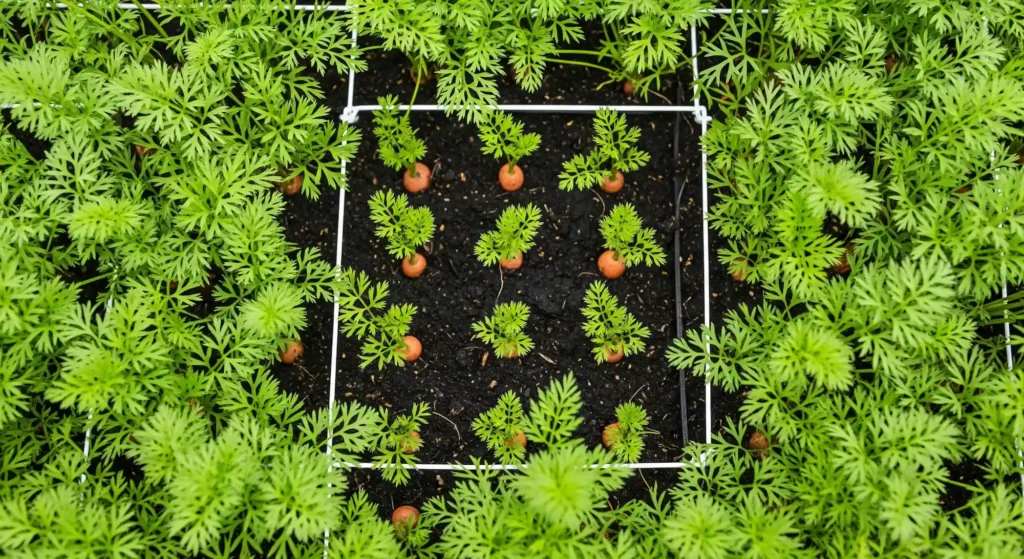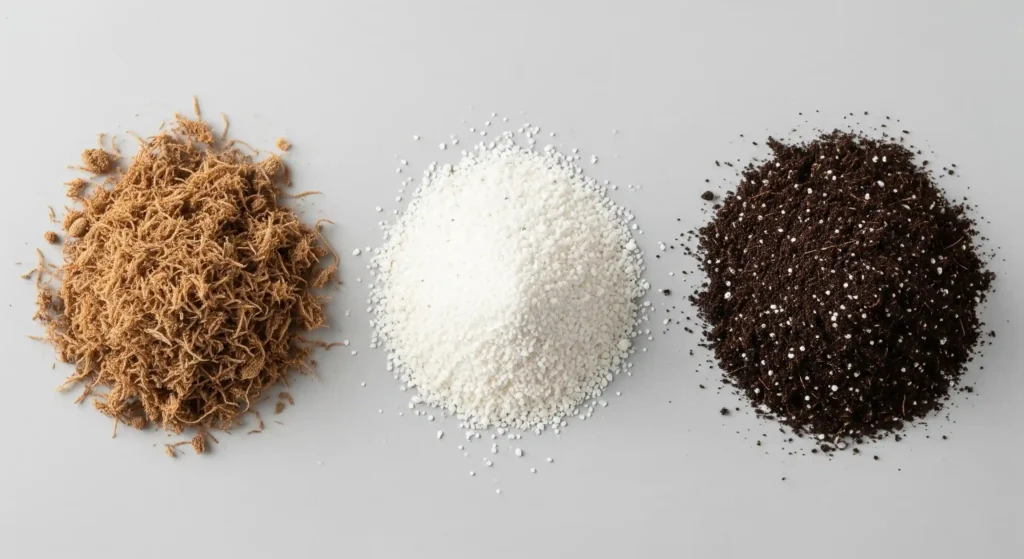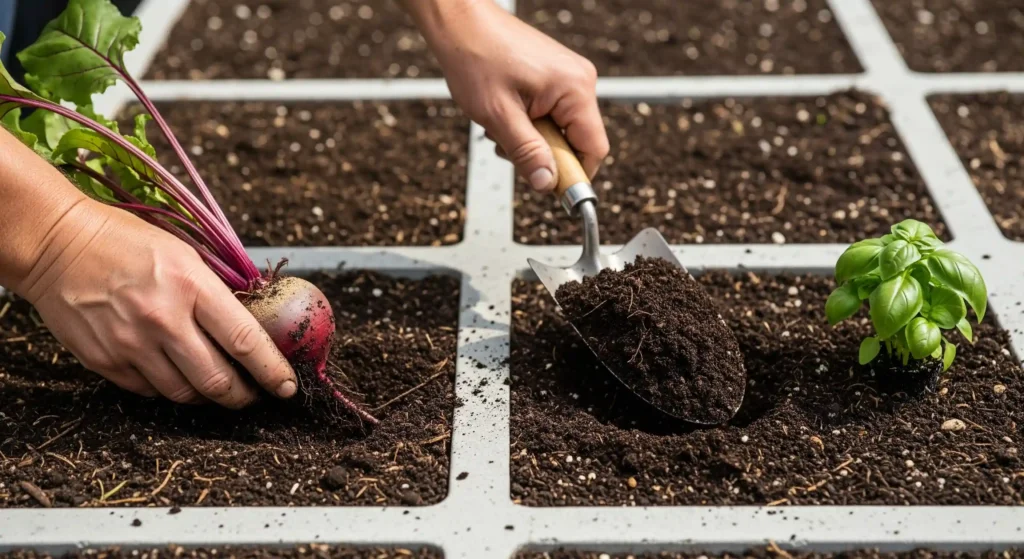Grow a huge harvest using square foot gardening to start the small-space revolution.
Dreaming of a backyard bursting with fresh veggies, have you ever turned pages in a gardening magazine only to be reminded of your little patio or tiny yard? I’m here to tell you there’s a completely revolutionary answer if you have ever felt that the ambition for a large, local harvest simply doesn’t fit the space or time you have. How then can you produce far more food in less space using noticeably less effort? The solution is Square Foot Gardening, a system. Engineer and gardener Mel Bartholomew devised this amazing technique using elevated, gridded beds and a unique soil mix to create a very large garden in a small area.
This book will open the secrets to your amazing efficiency in addition to guiding you through the basic, step-by-step procedure of building your own square foot garden. Learn the ideal soil formula, grasp the mechanics of intense plant spacing, and find out how to grow as many as sixteen separate plants in one square foot. Your fantasy of a great crop is far closer than you would have guessed.
Less is More: Why Square Foot Gardening Works Philosologically
You have to realize that Square Foot Gardening (SFG) is a whole change in perspective rather than only a method for building boxes. Frustration drove the system from birth. Successful engineer Mel Bartholomew invented it, but he started gardening only to find the wastefulness and inefficiency of conventional single-row farming perplexing. He observed all the lost space in the lengthy rows and walks, the squandered water, and the ceaseless, back-breaking weeding. He knew a better approach had to exist.

Using his engineering expertise, Mel created a system grounded in a few fundamental ideas:
- Use less soil, less water, less seeds, and a fraction of the physical labor.
- Efficiency: Completely cut up wasted area. The garden boasts a productive growth area every square inch.
- Make sure everyone—including kids, the elderly, and others with physical restrictions—can easily manage the garden you design.
SFG’s genius is its sharp contrast to conventional wisdom. SFG employs an enclosed, elevated bed with loose, ideal soil that you never walk in instead of long, single-file rows that call for you to compact the soil. This basic adjustment reduces weeding by around 90%, removes the need for tilling, and concentrates all your resources right where the plants need them. From my years of applying this approach, I can assure you the theory is sound: by doing less, you really grow more.
The Early Years of Extensive Planting
Mel Bartholomew was developing an idea thousands of years old even as he standardized and improved the technique for the modern house gardener. Born of need and creativity over human history, intensive gardening—getting the highest return from the least amount of space—is a habit.
Among the most amazing examples are the “French intensive” or maraîchage technique applied by 19th-century market gardeners all around Paris. Often constructed with layers of fresh dung for warmth, these gardeners used deep, nutrient-rich raised beds to produce an amazing quantity of vegetables to feed the city. Long before it was a hobbyist approach, they realized the potential of rich soil and thick planting.
Similar ideas are evident in the terraced gardens of the Inca, who cut rich, reasonably sized plots from mountainsides, or even in the confined, highly ordered cooking gardens, or hortus, of mediaeval monasteries. These early gardeners understood a basic truth: you do not need vast fields if you provide plants ideal soil and nutrients in a limited area. Mel Bartholomew’s tremendous accomplishment was distilling these strong, time-tested concepts into a straightforward, repeatable, almost perfect approach for the rest of us.
Creating Your Green Grid: A Methodical Guide for Step-by- Step Setup
About ready to create your own “tiny farm”? The arrangement is simple and one could finish it in an afternoon with ease. You’ll be on your way just following these guidelines.
First step: Select your site.
Among the decisions you will make, this is most important. Most veggies, as we have discussed, require plenty of sunlight to thrive. Spend a day looking over your yard before starting any construction. You are seeking for a place with minimum six to eight hours of direct, unhindered sunlight. For sun worshippers like tomatoes and peppers, this is non-negotiable.
Second step: build or place your raised bed.
A basic square foot garden measures 4x 4 feet. This size is perfect since it lets you quickly get to the center from any side without ever crossing the bed. If you must position a 2×4 foot box against a wall, though, it performs wonderfully; a 3×3 foot box is also quite good. Keeping it no wider than 4 feet is the secret.
Depth calls for just six inches. For newcomers, it can be startling; nevertheless, since we are building the ideal soil from scratch, the plants won’t have to send their roots far in quest of nutrients or water. You also need less soil to fill this modest depth! Your box might be built from pre-fabricated raised bed kits, composite decking, or even treated lumber.
See our page on Raised Garden Beds vs. In-Ground Gardens for further information on supplies and choices.
Third step: blend the ideal soil (“Mel’s Mix”).
The core of the system and the key of its success is this. Use neither ordinary packaged potting soil nor soil from your yard. You will produce what Mel Bartholomew famously termed “Mel’s Mix.” It’s a straightforward, exact recipe based on equal components by volume.

- One-third coarse vermiculite is a naturally occurring lightweight mineral heated to expand. Aeration and moisture retention is its intended use. Acting as a sponge, it stores nutrients and water, maintaining the light and fluffy condition of the soil so that roots may grow easily.
- One-third spagnum peat moss, sometimes known as coconut coir, offers the body and framework for your combination. It’s great in keeping moisture and stopping too rapid nutrient loss from the compost. Made from coconut husks, Coco coir is a more environmentally friendly substitute that performs just as well.
- Your plants will eat one-third blended compost. Here, the secret is combined. Like all cow manure, avoid depending solely on one kind of compost. Use compost from at least three to five distinct sources to guarantee a broad spectrum of nutrients for best results. Purchased bagged composts like ordinary garden compost, chicken manure compost, and mushroom compost can be combined.
Before scooping the completed product into your raised bed, mix well on a tarp using 8 cubic feet of mix total—roughly 2.7 cubic feet of each ingredient—to fill a 4’x 4’x 6″ box.
Interested in creating your own “black gold”? Our Beginners’ Composting Guide is a fantastic starting point.
The fourth step is adding the grid.
Whether you make your grid from thin strips of wood lath, string tacked to the sides of the box, or even repurposed venetian blinds, make sure it creates a clear grid of sixteen 1×1 foot squares on top of your soil. This is the management tool that makes this Square Foot Gardening possible.
The Science and Art of Plant Distance
Now that your box is ready, it’s time to plant. This is where the magic of intense planting comes into play. Instead of long rows, you plant in squares, following a straightforward guideline based on the ultimate size of the plant.
| Plant Spacing Guide |
|---|
| One extra large plant every square foot. |
| Ideal for big plants including tomatoes (staked), peppers, eggplant, broccoli, cabbage, cauliflower. |
| Four large plants per square foot. |
| Ideal for mid-sized vegetables including Leaf Lettuce, Swiss Chard, Strawberries, most herbs (such as Basil and Parsley). |
| Nine plants a square foot (medium). |
| Perfect for little plants such Bush Beans, spinach, beets, onions. |
| Sixteen Plants per Square Foot (Small) |
| Use for the smallest root vegetables and greens including green onions, radishes, carrots, and radishes. |
How can plants grow so close together? The science is twofold. First, the loose, fluffy, nutrient-dense Mel’s Mix eliminates the fierce root competition that happens in compacted garden soil. Roots don’t have to fight for resources. Second, as the plants grow, their leaves will quickly fill in and just barely touch their neighbors. This creates a “living mulch” canopy over the soil, which shades it, conserves moisture, and prevents nearly all weed seeds from germinating. It’s a self-sufficient little ecosystem in a box.
Modern Techniques: Vertical Go-ahead Planting and Succession
Once you have the fundamentals under control, you can apply these sophisticated techniques to enhance your yield even more.
Planting Succession
Succession planting—that is, the idea that no square should ever be left empty during the growing season—guides a very highly productive square foot garden: the moment you harvest a square, you immediately change the soil and plant something new. It’s a “harvest one, plant one” philosophy.

For a clear example: After you pull all 16 of your radishes from a square, just add a trowel-full of fresh compost, mix it in, and immediately plant a single, heat-loving pepper seedling in their place for the summer. This continuous planting guarantees a constant, rolling harvest.
Vertical gardening
Don’t forget to grow up! Integrating a trellis on the north side of your square foot bed is a game-changer. Placing it on the north side is important as it will prevent the trellis from throwing a shadow over the rest of your plants, thereby maximizing your limited footprint.
Surprisingly many vining crops can be grown vertically:
- Pole beans
- peas
- Vegetables
- Squish or little melons from squash
- Indeterminate tomatoes, the kind used in vining systems producing all season long
Tending Your Little Farm: Simplified Feeding and Watering
The fact that Square Foot Gardening requires less maintenance than a conventional garden is among its best benefits.
Hydrating
Watering is targeted, efficient, and simple. You water each square individually at the base of the plants, not by spraying the whole area. This delivers water directly to the roots where it’s needed and conserves an incredible amount of water over the season. I recommend hand-watering with a gentle spout, as it forces you to visit each square, observe your plants, and catch any potential issues early.
Weeding:
Because the Mel’s Mix is a sterile, soilless medium, it contains no dormant weed seeds. And because the plants quickly shade the soil, very few airborne seeds can find a place to sprout. The handful of weeds that do appear can be plucked out with two fingers from the loose soil in about five minutes a week. It’s really that easy.
Pruning
The rich, blended compost in your first Mel’s Mix provides all the nutrients your plants need for the first season; all you have to do in subsequent years is “recharge” each square after you harvest by adding one big trowel-full of fresh compost; this simple act replenishes the nutrients used by the previous crop and prepares the square for its next resident. No complex fertilizing schedules are needed here.
Your First Harvest & Beyond: Profiting from Reaping and Repeating Success
Harvest season is the moment you have been waiting for; this is the ultimate reward; a few basic ideas will enable you to maximize your yield while maintaining the garden neat and healthy.
Dense Plantings: Harvesting
Though it takes some attention, harvesting in a packed square is simple once you have the feel of it.
- Use a small pair of scissors to trim the outer leaves of “cut-and-come-again” crops like leaf lettuce so you avoid inadvertently dragging up the plant and upsetting its neighbors.
- Using a tiny trowel or hori-hori knife, gently loosen the dirt around one of your sixteen carrots or radishes first to let it slip out readily without disturbing the roots of the carrots next to it.
The “Recharge” System
This is the key to succession planting. After a square is fully harvested (for example, after you pull all 9 of your beets), the process is simple. First, pull out any remaining plant matter. Then, add one large trowel-full of your blended compost. Gently mix this into the top 3-4 inches of Mel’s Mix in that square. That’s it. The square is now fertile and ready for its next crop.
Managing the abundance
Be ready with a few basic preservation ideas; you can easily chop and freeze herbs like parsley and chives in ice cube trays with a little olive oil, or quick-pickle a jar of radishes to enjoy later. Your little box will generate quite a lot of food.
Examining Typical SFG Errors
Beginners can run across a few mistakes even in this almost perfect system; here’s how to fix most typical problems.
The issue is that my seedlings seem to be somewhat lanky, thin, and tall.
Your plants are physically reaching to find more sun; even if you felt the position was bright, it might not be enough. Your sunniest possible location is essential crucial for success. This is clearly an indication of inadequate light.
My plants are developing very slowly.
The answer is almost always related to the compost component of your Mel’s Mix. If you used only one type of compost, or a lower-quality one, it may lack the full range of micronutrients your plants need. Make sure you are using a mix of compost from several sources when you “recharge” your squares.
The core of the box’s plants seem to be smaller than those on the margins.
Make a deliberate effort to give every individual square a gentle, thorough soaking directly at the base of the plants. This is a classic indication of an uneven watering strategy; it’s simple to give the edges of the box a decent soak while unwittingly under-watering the middle squares.
The issue is a tomato plant that sprang out just where I’m growing carrots!
A seed from a past crop has just emerged; you have two options: you could carefully remove it to fit your planting schedule or let it flourish should the square be empty. These are known as “volunteers,” and they are a terrific indication that your compost is healthy and vibrant.
Are you suited for square foot gardening?
After all this, you could still be wondering if this is the appropriate approach for you. Let me say straight forwardly: yes, it is maybe the best way for beginners to start with.
The advantages are just indisputable:
- Comparatively to conventional techniques, you will produce considerably more food in the same space.
- You can bid hours of back-breaking weed pulling farewell.
- Water Conservation: The planned watering approach makes use of a fraction of the water overhead sprinklers consume.
- Perfect for Any Space: It’s good on a driveway, a tiny backyard, a patio or a deck.
- Completely Accessible: Kids, elders, and anybody with mobility issues will find ideal fit from the elevated height and compact, doable pieces.
Finally
The gratification of walking out to your own neat, productive, and beautiful grid of green to harvest dinner is an experience every aspiring gardener deserves; Square Foot Gardening is more than just a gardening method; it’s a logical, proven, and very satisfying system that empowers anyone to grow an abundant feast in a shockingly small space.
All you need to enjoy a significant harvest is a single 4×4 box, the correct soil, and the basic grid system described in this tutorial; you do not need a big yard or years of experience. I invite you to start your small-space revolution now.









